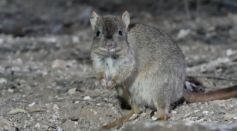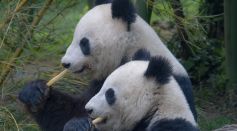Tags: Endangered species
6 Female Ocelots Returned to the Wild After Being Rescued From Wildlife Traffickers
Extremely Rare Pig-Faced Shark Shocks Italian Sailors; Is This a Mutant Fish?

AWC Returns Locally Extinct Brush-tailed Bettongs to Northern Territory After 60 Years
Endangered Scrotum Frog Live At the Bottom of Lake Titicaca; Public Display and Study Conducted to Saving Them From Extinction
The US Fish and Wildlife Service Announced Sierra Nevada Red Fox as Endangered Species

Xerces Blue Butterfly Wiped-Out Due to Urban Development; First Distinct Insect Species Extinct by Human Activity
Female Grizzly Bear Seen in Washington State for the First Time After 40 Years, Fitting It With Radio Collar

Giant Pandas in China No Longer Extinct After Decades of Conservation

A New Species of Thismia Calls Attention for Conservation of Fairy Lanterns

Human Survival Under Threat as More Than 37,400 Animals Species and Microorganisms at Risk of Extinction

Comprehensive Genome Analysis Reveals Four Known Species of Giraffes
Endangered Sumatran Rhinoceros Displays Surprisingly Good Health, Genome Research Reveals
Relocating Threatened Animals May Accidentally Spread Pathogens
Endangered Species: Classification of These Two African Elephant Types Has Now Been Downgraded
Variable Harlequin Toad: Critically Endangered Species Bred in Captivity for the First Time
First Cloned Endangered Species in the US: Black-Footed Ferret Seemingly Brought Back to Life From 30 Years Ago
Philippine Pangolins Spotted, Researcher Suggest It’s Not Too Late to Save Them

Using Satellite Cameras, Scientists Counted Elephants From Space
Tapanuli Orangutan: Rarest Great Ape Is in Greater Danger Than Previously Known
Ruling for Monarch Butterfly Protection Delayed For Several Years
Most Popular

Can EV Batteries Be Recycled? How Lithium Recovery Supports Sustainable Batteries

Coral Bleaching Crisis: How Ocean Warming Threatens Marine Ecosystems Worldwide

V2G Technology: How EV Energy Storage Utilizes Smart Grid and Renewable Energy Integration

El Niño and La Niña Explained: How Climate Cycles Drive Extreme Global Weather Patterns





